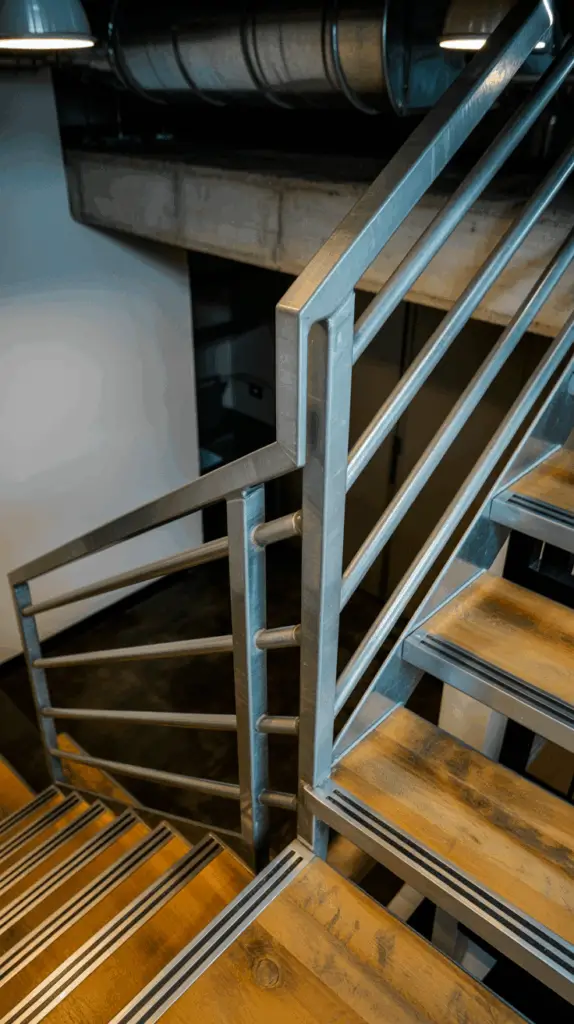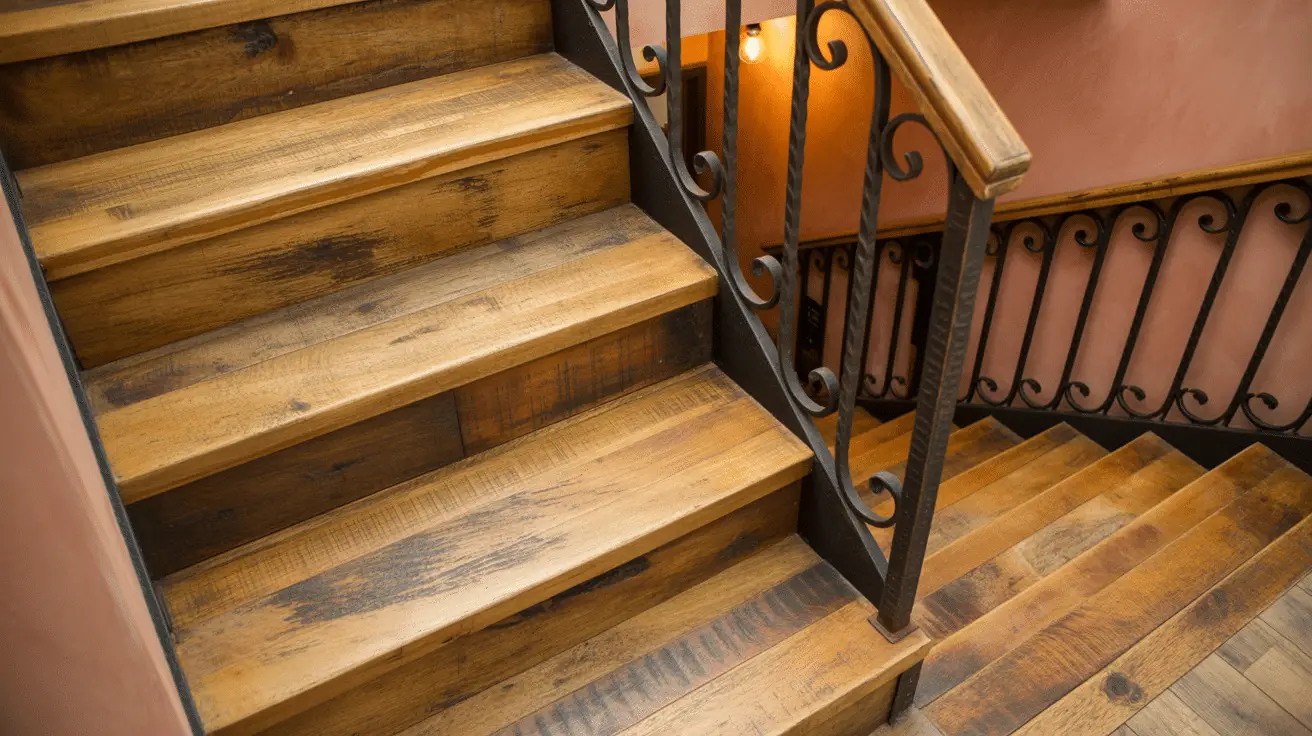Rustic and Industrial Basement Stairs Ideas for Trendy Homes: Transform Your Space with Style
Table of Contents
Introduction:
Basement stairs are often one of the most overlooked areas in a home when it comes to design, yet they offer a unique opportunity to make a bold statement. Whether you’re looking to refresh an outdated basement or completely transform the space, the right staircase can completely elevate the aesthetic of your home. Rustic and industrial styles are increasingly popular for basement stairs, blending raw materials, earthy finishes, and sleek designs that cater to modern tastes. These design styles are perfect for homeowners looking to add character, texture, and functionality to their basements, turning an often-neglected space into a stylish focal point.
In this blog post, we’ll dive into rustic and industrial basement stair ideas, offering creative inspiration and practical tips on how to incorporate these styles into your home. From exposed wood to steel railings and concrete finishes, we’ll explore the best materials and designs that can make your basement stairs not just functional, but also a key element of your home’s aesthetic. Whether you’re working with a small, cramped space or a large, open basement, these ideas will help you create stairs that are both trendy and timeless.
Let’s explore how you can transform your basement stairs into a stylish statement piece with these trendy rustic and industrial design ideas.
1. Incorporating Exposed Wood for a Warm, Rustic Appeal
One of the most iconic elements of rustic design is exposed wood. In a basement setting, exposed wooden stairs can create an inviting, warm, and natural feel. The beauty of rustic wood lies in its imperfections—whether it’s reclaimed wood with a history or fresh timber with a natural grain, it adds character and texture that can transform an otherwise plain staircase into a stunning feature.
For rustic basement stairs, opt for wooden treads and risers made from reclaimed or unfinished wood. The natural grain patterns and weathered finishes of reclaimed wood give your basement stairs a unique, earthy look. If you’re aiming for a more polished appearance, consider using hardwoods like oak, walnut, or pine that provide both durability and beauty. To enhance the rustic feel, you can pair the wooden stairs with wrought iron railings for a balanced combination of rustic and industrial elements.
You can also experiment with different wood finishes—lighter tones like ash or maple will make the space feel airy and bright, while darker woods like walnut or mahogany will lend a sense of sophistication and warmth to the basement.
2. Industrial Steel Railings for a Bold Look
Industrial design is all about raw materials, and one of the most striking features of an industrial basement stair is the use of steel. Industrial steel railings, with their sleek, minimalist designs, complement rustic wooden steps perfectly while giving the staircase an edgy, contemporary look.
Opting for steel railings for your basement stairs offers several advantages. First, steel is highly durable and can withstand the wear and tear of high foot traffic, making it a practical choice for basement spaces. Second, its clean, unadorned look provides a strong visual contrast to the warmth of wooden stairs, resulting in a balanced and eye-catching design.
You can choose from various steel railing styles, from simple horizontal bars to more intricate designs with geometric patterns. For a truly industrial look, leave the steel unfinished or go for matte black or brushed steel finishes, which emphasize the raw, utilitarian aesthetic of industrial style.

3. Concrete Staircases for a Modern Industrial Edge
For a truly industrial and modern twist on basement stairs, concrete is an excellent material choice. Concrete stairs add a sleek, urban feel to any space, with their clean lines and minimalist design. Concrete can be used for the entire staircase—from the treads to the risers—or simply as an accent in combination with other materials like wood or metal.
Concrete offers both versatility and durability. It can be poured into any shape, so you can customize the design to fit your space perfectly. Concrete stairs can also be left raw for a more rugged, industrial look, or polished for a sleek, contemporary vibe. To soften the look, you can pair concrete steps with wooden handrails or add lighting underneath the stairs for a subtle, modern touch.
Concrete also works well in basement spaces because of its ability to absorb heat, making the environment feel warmer, even in cooler basements. If you’re aiming for a modern industrial design, concrete stairs with exposed steel or glass accents can elevate the overall look of your basement.
4. Adding Lighting to Enhance the Stairs’ Appeal
Proper lighting is essential in any staircase design, but when it comes to rustic and industrial styles, the right lighting can truly elevate the ambiance. Adding lighting to your basement stairs serves both a functional and aesthetic purpose.
For rustic basement stairs, consider installing warm, soft lighting that enhances the natural materials. Recessed lighting underneath the stairs creates a cozy, ambient glow, highlighting the wooden treads and adding an inviting feel. If you prefer a more industrial approach, go for exposed pendant lights or vintage-style Edison bulbs suspended above the stairs. These fixtures evoke the industrial age while adding a stylish focal point.
LED strip lights along the edges of the stairs or in the handrails can create a modern touch, while also increasing visibility and safety. Lighting up your stairs also makes them more of a feature in the room, drawing attention to the stylish design elements you’ve incorporated into the space.
5. Combining Rustic and Industrial Elements for a Balanced Look
The beauty of combining rustic and industrial design elements in your basement stairs lies in the harmony between the rawness of industrial materials and the warmth of rustic features. This balance allows you to create a space that feels both grounded and modern, with layers of texture and style.
A perfect example is using wooden steps with a steel frame and railings. The wood brings warmth, while the metal adds a touch of sophistication and industrial grit. Another idea is to use reclaimed wood for the stairs themselves, combined with a concrete or steel landing for a striking visual effect.
To tie the design together, add accents such as vintage-style light fixtures, exposed piping, or concrete flooring that complements the industrial elements, while plush rugs or cozy seating can enhance the rustic feel. The key is balancing the two styles without letting one overpower the other, creating a space that feels cohesive and dynamic.
6. Customizing Your Staircase with Unique Details
If you want your rustic and industrial basement stairs to stand out even more, consider customizing the design with unique, personalized details. Custom elements can make your stairs feel truly one-of-a-kind and allow you to showcase your personality through the design.
You can customize the stair treads with unique materials like reclaimed wood from a barn or an old factory, giving your stairs a distinctive story and texture. You can also add personalized features such as custom metal handrails with unique designs or ornamental details. For a more industrial feel, consider adding mesh or grid patterns to your steel railings for added texture and visual interest.
Consider adding custom lighting fixtures, such as wall sconces along the staircase or bespoke pendant lights that reflect your personal style. These elements help make your basement stairs an integral part of the overall design of the room, showcasing your taste and creativity.
7. Ensuring Safety While Maintaining Style
While style is essential in designing rustic and industrial basement stairs, safety should always be a priority. Make sure that your stairs are functional and safe for everyday use, especially if you have young children or elderly family members.
Consider adding non-slip treads to your wooden or concrete steps, or opt for stair runners to provide traction. When using industrial materials like steel or concrete, ensure that the edges are smooth and rounded to prevent injury. If you have a steep staircase, installing a sturdy handrail is crucial for safety and can also serve as a design element.
For added safety, you can incorporate LED lighting that illuminates the stairs to prevent accidents. While safety is important, it’s possible to combine it with aesthetic considerations to create a beautiful yet functional design.
Conclusion:
Creating a rustic and industrial basement staircase is a wonderful way to add character and charm to your home. By blending materials like wood, steel, and concrete, you can design a staircase that not only serves as a functional element but also becomes a focal point in your basement. Whether you prefer the warmth of reclaimed wood or the sleekness of steel and concrete, there are countless ways to incorporate rustic and industrial design elements to create a stunning and inviting atmosphere. With thoughtful planning and a balance of materials, your basement stairs can become a stylish, unique feature that enhances the overall look of your home.

